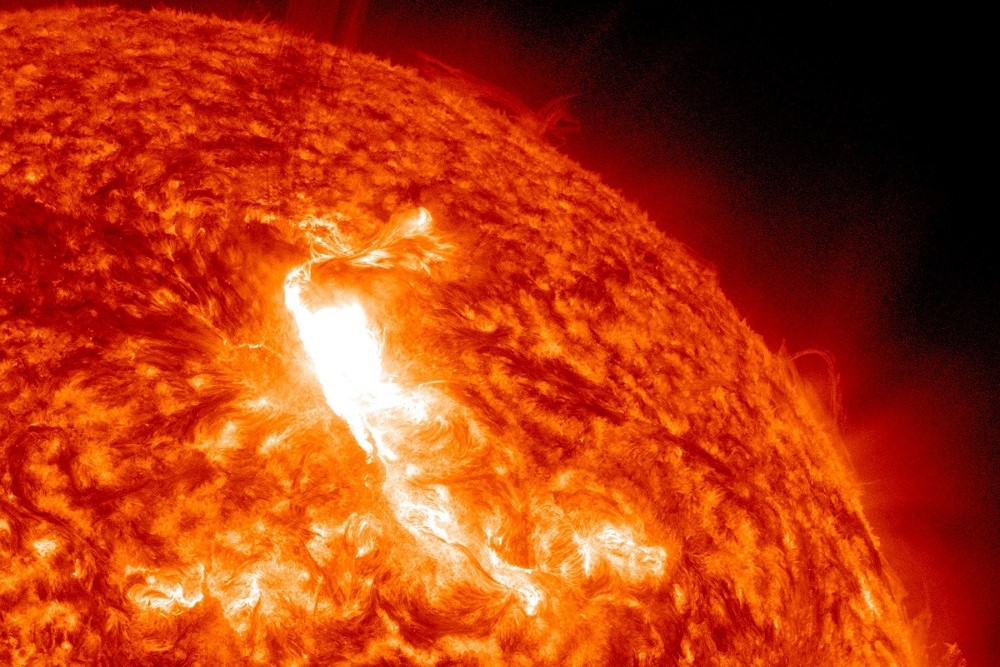
As pressure grows to phase out fossil fuels and meet emissions-reduction targets, Australia is well placed to harness clean, affordable and virtually unlimited space-based solar power.
A report commissioned by the UK government on space-based solar was released in September 2021 after a study by scientific, technical and economic experts. It examined two leading baseload designs—SPS Alpha designed by Mankins Space Technologies in the US in partnership with Melbourne-based technology company Solar Space Technologies, and CASSIOPeiA designed by Ian Cash in the UK.
Consultants Frazer-Nash concluded that both were technically and economically viable. To declare my interest, I am the director of Solar Space Technologies, the company Mankins partnered with in developing the SPS Alpha design. The broad space-based solar power concept is explained in this Financial Times video.
Based on the consultants’ report, in March 2022 the UK launched its space energy initiative to lead the development of space-based solar power.
The US is also considering this technology under a draft presidential policy directive on a national strategy for space solar power, which gives detailed instructions to nine US government departments.
The Australian House of Representatives Standing Committee on Industry, Innovation, Science and Resources space industry report, The now frontier: developing Australia’s space industry, released in December 2021, recommended that consideration be given to developing a mechanism to identify and develop innovative space proposals such as space solar power technology in Australia.
In March, the European Space Agency announced that it had signed contracts for two parallel concept studies for commercial-scale space-based solar power plants. It said that represented a crucial step in the agency’s new SOLARIS initiative—maturing the feasibility of gathering solar energy from space for terrestrial clean energy needs.
China is already carrying out preliminary tests of the concept. In March 2022, Beijing announced that solar power stations would be launched which, it said, may solve human power shortages. China’s plan is to launch a space power generation test satellite first to trial the key microwave and laser power transmission. The appropriate technology would then be selected for further development.
It’s likely that China will use this development to encourage smaller nations into its orbit.
In January 2022, Russia’s space agency, Roscosmos, proposed the idea of a solar power plant in space and said it had completed design work. The system would also be used to recharge satellites.
A space solar power station of 2 gigawatts—an output similar to that of a large coal-fired power station—in geosynchronous orbit would cost about the same as a Virginia-class submarine and over 30 years an SPS Alpha Satellite will generate $53 billion in revenue.
What a wonderful initiative for Australia to add to the AUKUS technology-sharing agreement. This could be implemented immediately, not for military purposes but for the good of humanity. Harnessing unlimited clean baseload power is certainly in Australia’s national security interests. The benefits are clear—low cost, limitless power 24/7, 365 days a year with zero carbon emissions that can be beamed to wherever you want it.
This could drive thousands of new, well-paying manufacturing jobs in regional and remote Australia and the power can be sent directly to wherever it’s needed.
The mining industry could benefit from having a low-cost energy source for ongoing production and new smelting operations.
This technology will resolve issues for those trying to meet the 2050 emissions-reduction target, and it fits the government’s desire to solve the looming consequences of climate change with technology.
It also can provide the energy required for human activity in space, particularly on the moon and Mars. With water on the moon we can generate oxygen. This fits well with the aspirations of the Australian Space Agency.
The return on the capital investment for SPS Alpha Mark III, the final operational design, will be five to seven years once it’s in geostationary orbit above Australia.
The bottom line is that solar power technology is already designed and technical experts are ready to implement it in Australia. This technology is a nation-building industry for Australia’s wellbeing, jobs and wealth creation into the 21st century.
John F. Kennedy famously declared in September 1962: ‘We choose to go to the moon in this decade and do the other things, not because they are easy, but because they are hard, because that goal will serve to organise and measure the best of our energies and skills, because that challenge is one that we are willing to accept, one we are unwilling to postpone, and one which we intend to win, and the others, too.’
This big idea, space-based solar power, is in the same league.
It will put humanity on the path to almost unlimited clean power at an affordable price.

